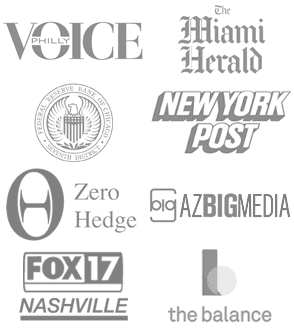With first mortgage rates still on the higher side, homeowners have migrated to the HELOC because it enables them to keep their low interest rates while tapping into their property’s equity for purposes like consolidating debt, home renovation or cover the costs of life’s emergencies. With average tappable equity at $200,000 per homeowner and HELOC rates around 8.25% as of August, these revolving home equity lines of credit offer flexibility during the draw period (typically 5-10 years with interest-only payments) and structured repayment afterward (10-20 years with principal plus interest). However, banks and lenders do not like approving HELOC applications with late mortgage payments—defined as 30 days or more past due—pose a significant hurdle to approval.
The Impact of Late Mortgage Payments on HELOC Approval

These lates payments damage your credit score, signal risk to lenders, and can lead to outright denials from traditional banks.
Yet, it’s not impossible; to get a HELOC with late mortgage payments with alternative options like Non-QM HELOCs, Hard Money HELOCs, DSCR HELOCs, and Private Home Equity Loans cater to borrowers with imperfect histories.
The RefiGuide published this article to explore the challenges, potential pathways to approval, and these specialized solutions, complete with four case studies illustrating real-world outcomes.
By understanding these, homeowners can navigate the process more effectively in a year where mortgage delinquencies have risen slightly to 3.6%, per economic reports.
Late mortgage payments are a red flag for lenders because they directly relate to your ability to manage home-related debt. A single 30-day late can drop your FICO score by 60-100 points, and multiple lates compound this, making scores fall below the 680-720 typically required for standard HELOCs. Traditional lenders like Bank of America or Wells Fargo often demand no late payments in the last 12 months, as these indicate ongoing financial stress. Even if your score rebounds, lates stay on credit reports for seven years, potentially triggering manual underwriting or denial.
Beyond credit, lates affect debt-to-income (DTI) ratios and equity requirements. Lenders prefer DTI under 43% and at least 15-20% equity after the HELOC. If lates stem from financial hardship, they may question repayment ability, leading to higher rates (9-10%) or reduced limits if approved. However, if lates are isolated (e.g., one 30-day late over two years ago) and explained (medical emergency, job loss), some lenders may overlook them after 12-24 months of on-time payments, known as “seasoning”. For recent lates, traditional approval is tough, pushing borrowers to alternatives.
HELOC Solutions for People with Late Payments
For those with late mortgage payments, non-traditional HELOCs provide viable paths. These products, often from specialized lenders, focus less on personal credit and more on equity or property income.
Non-QM HELOC
Non-Qualified Mortgage (Non-QM) HELOCs cater to borrowers who don’t fit conventional guidelines, including those with late payments or bad credit (scores as low as 620). These are portfolio loans held by the lender, allowing flexibility like bank statement income verification instead of W-2s. Rates start at 8-10%, with LTV up to 90%. Lenders like West Capital Lending’s Second chance HELOC program approve based on equity strength, not perfect payment history, though recent foreclosures are deal-breakers. Benefits: Quick approvals (2-4 weeks), no PMI, but higher fees (1-3%).
Hard Money HELOC
Hard money HELOCs, from private lenders, are asset-based and forgiving of late payments or bad credit (scores 500+ OK). They prioritize property value over personal finances, with rates 10-15% and LTV 50-70%. Approval is fast (1-2 weeks), ideal for urgent needs, but terms are short (1-5 years) and fees high (3-5 points). RefiGuide notes they’re suitable for past lates if equity is strong, but expect balloon payments. Drawback: Higher default risk due to costs.
DSCR HELOC
Debt Service Coverage Ratio (DSCR) HELOCs target investors, qualifying based on property cash flow (DSCR ≥1.0-1.25) rather than personal income or credit. Late payments on personal mortgages may not disqualify if the investment property performs. Rates 7.5-9.5%, LTV 75-80%, with no personal DTI check. Lenders like Angeloak allow recent lates if DSCR is solid, focusing on rental income. Great for real estate pros, but limited to income-producing properties.
Private Home Equity Loans
Private loans from hard money firms or peer-to-peer platforms offer customized terms for bad credit or lates. Rates 9-12%, LTV 60-80%, with flexible underwriting (e.g., no 12-month seasoning required). IHFLend.com emphasizes they’re perfect for poor credit or inconsistent income, with approvals in days. However, they’re expensive and short-term, best as bridges to traditional financing.
Navigating HELOC Approval with Late Mortgage Payments
Case Study 1: Standard Denial, Non-QM Success
John, a 45-year-old teacher in Texas, had two 30-day late mortgage payments in 2023 due to job loss. His score dropped to 650, and traditional lenders denied his $100,000 HELOC application in March 2025, citing risk. He turned to a Non-QM HELOC from LBC Mortgage, qualifying with bank statements and 25% equity. Approved at 9.5% rate, he consolidated debt, rebuilding credit with on-time payments. By August, his score rose to 680, allowing a refi to standard terms.
Case Study 2: Hard Money Bridge for Urgent Needs
Maria, a 38-year-old entrepreneur in California, faced denial from banks due to a 60-day late in 2024 from medical bills (score 620). Needing $80,000 for business expansion, she secured a hard money HELOC from New Funding at 12% rate and 65% LTV. Approved in 10 days despite lates, she used it as a bridge, paying off after six months with profits. This case shows hard money’s speed but high costs (3% fees), ideal for short-term.
Case Study 3: DSCR for Investor with Personal Lates
David, a 50-year-old investor in Florida, had three lates on his primary mortgage in 2023 (score 640), blocking standard HELOCs. For his rental property, he applied for a DSCR HELOC from West Capital, qualifying with a 1.25 DSCR from rents, ignoring personal lates. At $150,000 and 8.75% rate, 75% LTV, it funded portfolio growth. He notes DSCR’s focus on asset performance allowed approval despite history.
Case Study 4: Private Loan for Recent Lates
Lisa, a 42-year-old freelancer in New York, was denied traditionally due to a 30-day late in early 2025 (score 610). She obtained a private home equity loan from Associates Home Loan at 11% rate, 60% LTV for $60,000. Approved based on equity strength, not credit, it covered emergencies. After six months of on-time payments, she refinanced to a Non-QM at lower rates. This highlights private loans’ flexibility but as a last resort due to costs.
Takeaways on Getting Approved for a HELOC with Late Mortgage Payments in 2025
While late mortgage payments complicate standard HELOC approval, alternatives like Non-QM, Hard Money, DSCR, and Private loans offer solutions for those with blemished records. As our case studies show, success depends on equity, explanations, and lender choice. Improve chances by disputing errors, building 12 months of on-time payments, and reducing DTI. Consult credit counselors or platforms like NerdWallet for options. In 2025, with equity high, persistence pays off—but borrow wisely to avoid further lates.
